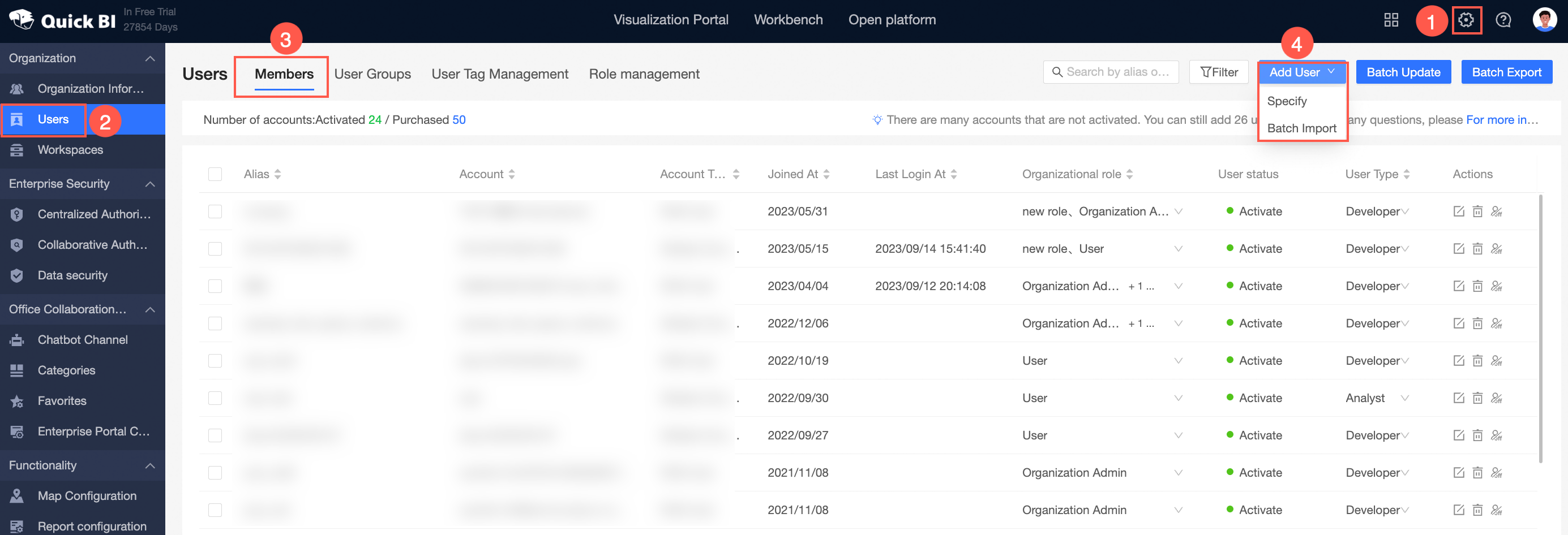An account is a subject used in a workspace. This topic describes user types, user roles, and feature operations.
Background information
The following list provides the types and roles of organization users in Quick BI:
Type of User
At the organizational level, there are two types of users:
Developers include enterprise IT personnel, data analysts, and data operations personnel.
Visitors can be users such as bosses and leaders who only view reports. Visitors can also be field business personnel who only view data results. Visitors can subscribe to and view dashboards, workbooks, and BI portals. Visitors can also use URLs to view these data objects.
User roles
Organization Role
At the organization level, three preset organization roles are available. You can add custom organization roles.
Organization Administrator: manages the information, status, and members of a project. Organization administrators can specify an organization user as an organization administrator.
We recommend that one to three users assume the organization administrator role. In most cases, project managers and personnel that are responsible for the Quick BI platform assume this role.
Permission Administrator: allows you to manage project resources. We recommend that one to three users assume the permission administrator role. In most cases, the personnel that are responsible for the Quick BI platform assume this role. The permission administrator grants the user account the permission administrator role, which is mainly responsible for uniformly assigning and managing permissions in the background.
common user: Users who have not been set up as organization administrators and permission administrators.
Custom Organization Role: You can customize an organization role based on your business requirements. For more information, see Organization roles.
Workspace Roles
At the spatial level, there are four preset spatial roles. You can add custom spatial roles.
The workspace administrator has the permissions to create, edit, and view all modules. The workspace administrator is the role that has the most permissions in the current workspace. In addition to the preceding permissions, the workspace administrator can manage the permissions and works of other members in the workspace.
The workspace developer has the permissions to create, edit, and view all modules.
Spatial analysts have the permissions to create (edit) and view BI portal, dashboards, dashboards, workbooks, ad hoc analysis, self-service data retrieval, and data preparation modules, view data forms and data sources, and use and view datasets.
The workspace viewer has the permissions to view all modules.
Custom Workspace Role: You can create custom workspace roles based on your business requirements. For more information, see Workspace roles.
Description
The organization administrator can enter the Add User interface as shown in the figure.
 You can click Manually Add or Batch Import to add users.
You can click Manually Add or Batch Import to add users. Quick BI, you can add Alibaba Cloud accounts and RAM users.
For more information about how to change the instance type of your RDS instance, see the following topics: